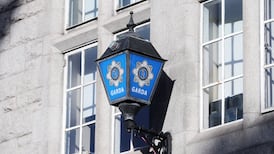The late Conor Cruise O’Brien witheringly referred to it as “the make-believe China on Taiwan”. That was when the sub-tropical island’s government still held China’s seat on the UN Security Council – a bizarre state of affairs that finally came to an end in 1971.
Since then, Taiwan, the self-styled Republic of China has been excluded from the UN, even as an observer. This is in deference to “mainland China” now such a significant economic force in the world that nearly everyone must kowtow to Beijing if they want to stay in business.
So when I was invited to Taiwan for a week by the Dublin-based Taipei Representative Office (as it must call itself), I was intrigued to find out what it was really like compared to the People’s Republic of China, which I had already visited three times since 2005.
Realpolitik dictates that Taiwan is excluded from international negotiations on climate change, including the UN’s Lima conference, now under way, despite having an exemplary environmental record in recent years and ambitious plans to cut its greenhouse gas emissions.
For its part, Taiwan has been downplaying its still-official, but wholly meaningless, title as the Republic of China, founded on the mainland in 1912.
At Taipei airport, the immigration cards now say “Welcome to ROC (Taiwan)”, which is obviously a diplomatic abbreviation.
At UN climate conferences, it can only participate on the sidelines via the Taiwan Institute for Sustainable Energy, a non-governmental organisation, headed by one-time environment minister Eugene Chien, who is a very effective spokesman for his country and its agenda.
Dr Chien has even given lectures in Beijing and other mainland cities, where environmental protection lags well behind the island, which is smaller than the Netherlands and has a population of 23 million, all of whom must do four hours of environmental education every year.
Soccer kit
Waste management in Taiwan is so well-organised and recycling rates so high that some of its 24 municipal incinerators will have to close down because there simply isn’t enough garbage to feed them. Yet in Dublin, we’re building one at Poolbeg that’s grossly over-scaled.
Incredibly, the soccer kit worn by a third of all the teams in this year’s World Cup was made in Taiwan from recycled plastic bottles. Taipei’s cleanliness would also put Dublin to shame; the tiled floor of its main railway station is so spotless that people lounge around on it.
When motorways became congested, a new north-south high-speed rail line was built, linking Taipei with every city on the populous west side of the island. It opened in 2007, long before similar schemes on the mainland, with sleek, low-slung trains doing up to 300km/h.
As in Vietnam, a lot of people in Taiwan get around on scooters, which helps to reduce traffic congestion in the cities; if they all had cars, it would be impossible. There are also well-developed metro systems, with a minimum fare of just 20 new Taiwan dollars (less than 50 cent).
Journalists on the trip, from 26 countries worldwide, couldn’t fail to be impressed by what we saw and heard. For example, every single traffic light on the island has been converted to low-energy LEDs, and half of all the street lighting. Again, way ahead of other countries,
Taiwan is now the second largest exporter of solar panels in the world (after China). Its national stadium in Kaohsiung, designed by Japanese starchitect Toyo Ito, has a dragon-style roof of photovoltaic cells that generate one megawatt of electricity, providing most of its power needs.
Research
The Industrial Technology Research Institute in Hsinchu has an annual budget of nearly €500 million, employs 5,600 researchers (including 1,350 with PhDs) and generates an average of 1,000 patents a year – many of them covering new inventions of energy-saving devices.
In short, Taiwan has a lot to bring to the table in Lima and wants to share its impressive achievements as well as having meaningful participation in the process. Whatever about its anomalous position vis a vis China, it’s a great little country that deserves to continue thriving.
And the views from the 91st-floor observation deck of Taipei 101, now billed as “the world’s tallest green building”, are as breathtaking as you can imagine.









